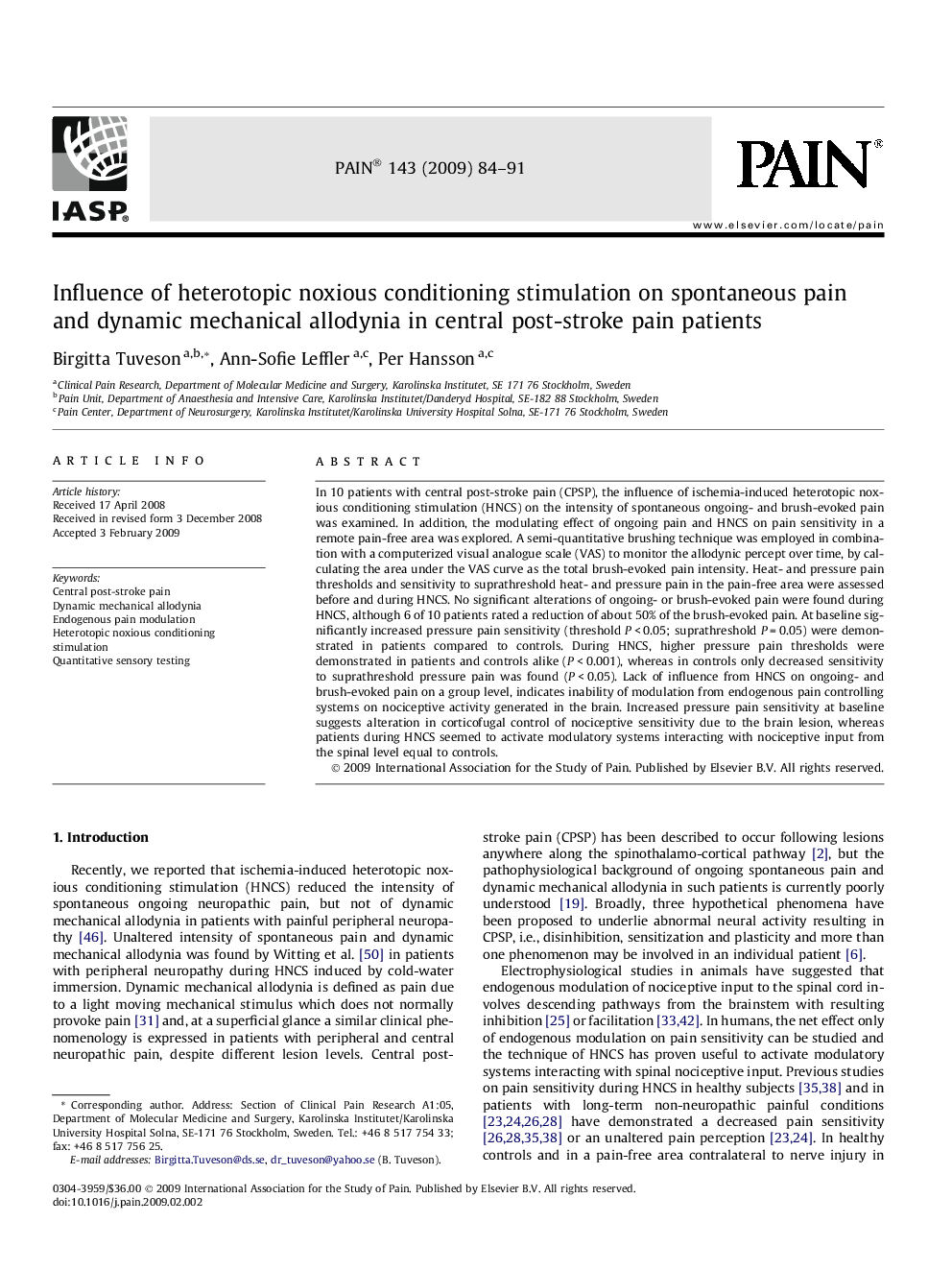| کد مقاله | کد نشریه | سال انتشار | مقاله انگلیسی | نسخه تمام متن |
|---|---|---|---|---|
| 914658 | 1473243 | 2009 | 8 صفحه PDF | دانلود رایگان |
عنوان انگلیسی مقاله ISI
Influence of heterotopic noxious conditioning stimulation on spontaneous pain and dynamic mechanical allodynia in central post-stroke pain patients
دانلود مقاله + سفارش ترجمه
دانلود مقاله ISI انگلیسی
رایگان برای ایرانیان
کلمات کلیدی
موضوعات مرتبط
علوم زیستی و بیوفناوری
علم عصب شناسی
علوم اعصاب سلولی و مولکولی
پیش نمایش صفحه اول مقاله

چکیده انگلیسی
In 10 patients with central post-stroke pain (CPSP), the influence of ischemia-induced heterotopic noxious conditioning stimulation (HNCS) on the intensity of spontaneous ongoing- and brush-evoked pain was examined. In addition, the modulating effect of ongoing pain and HNCS on pain sensitivity in a remote pain-free area was explored. A semi-quantitative brushing technique was employed in combination with a computerized visual analogue scale (VAS) to monitor the allodynic percept over time, by calculating the area under the VAS curve as the total brush-evoked pain intensity. Heat- and pressure pain thresholds and sensitivity to suprathreshold heat- and pressure pain in the pain-free area were assessed before and during HNCS. No significant alterations of ongoing- or brush-evoked pain were found during HNCS, although 6 of 10 patients rated a reduction of about 50% of the brush-evoked pain. At baseline significantly increased pressure pain sensitivity (threshold PÂ <Â 0.05; suprathreshold PÂ =Â 0.05) were demonstrated in patients compared to controls. During HNCS, higher pressure pain thresholds were demonstrated in patients and controls alike (PÂ <Â 0.001), whereas in controls only decreased sensitivity to suprathreshold pressure pain was found (PÂ <Â 0.05). Lack of influence from HNCS on ongoing- and brush-evoked pain on a group level, indicates inability of modulation from endogenous pain controlling systems on nociceptive activity generated in the brain. Increased pressure pain sensitivity at baseline suggests alteration in corticofugal control of nociceptive sensitivity due to the brain lesion, whereas patients during HNCS seemed to activate modulatory systems interacting with nociceptive input from the spinal level equal to controls.
ناشر
Database: Elsevier - ScienceDirect (ساینس دایرکت)
Journal: Pain - Volume 143, Issues 1â2, May 2009, Pages 84-91
Journal: Pain - Volume 143, Issues 1â2, May 2009, Pages 84-91
نویسندگان
Birgitta Tuveson, Ann-Sofie Leffler, Per Hansson,